1 of 28
Download to read offline
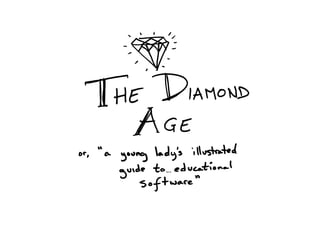




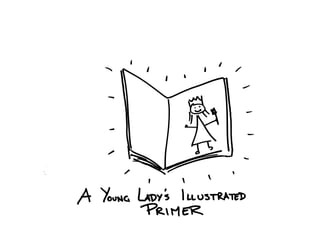
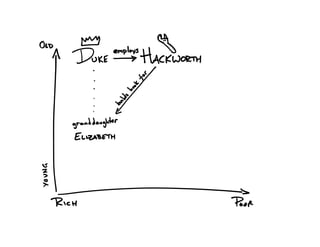
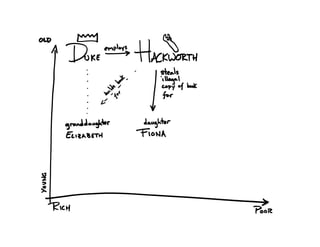
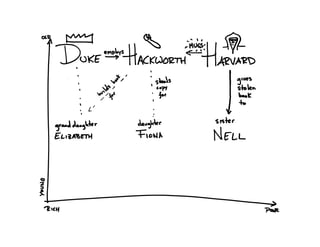


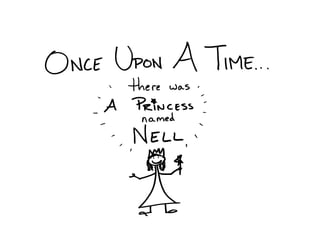
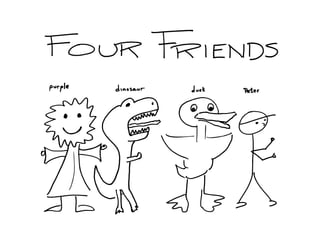
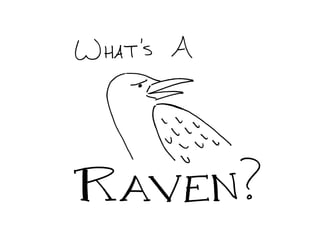
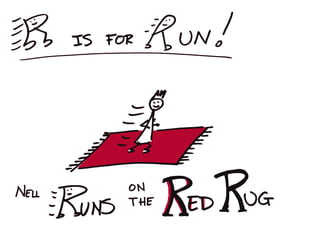

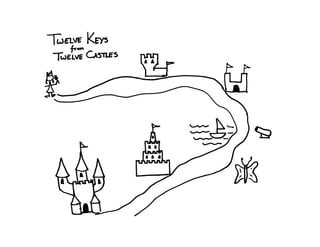

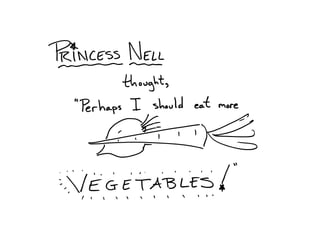
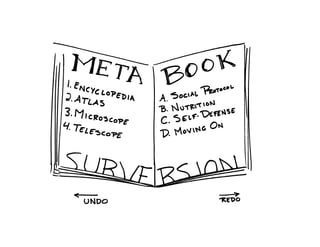
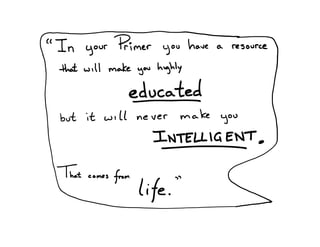

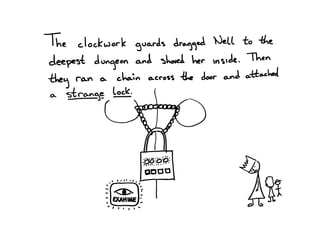

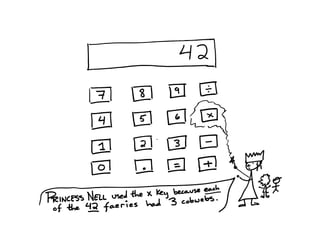
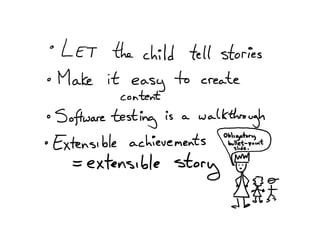


Ad
Recommended
Ceibal Jam - Desarrollo de software para laptops XOpflores2
╠²
Este documento describe la Comunidad de Programadores Voluntarios para las XO. El grupo es un movimiento social independiente y abierto que busca desarrollar aplicaciones ├║tiles para el Plan Ceibal de Uruguay enfoc├Īndose en las necesidades del pa├Łs. Trabajan con software libre y modelos de desarrollo en espiral con retroalimentaci├│n continua en tiempos libres y con apoyo de privados. Buscan involucrar a programadores, estudiantes, docentes y dise├▒adores para mejorar el conocimiento de las necesidades de los usuarios.OLPC Deployment in Uruguay (Miguel Brechner)
OLPC Deployment in Uruguay (Miguel Brechner)C. Scott Ananian
╠²
The document summarizes Uruguay's Plan CEIBAL, which aims to provide one laptop per child and teacher in Uruguay's public schools. The key points are:
1) Plan CEIBAL aims to promote equity, learning, and technology use in Uruguay's education system by providing wireless-connected laptops to all 350,000 public school students and teachers.
2) Its main goals are to ensure equal access to information, increase learning opportunities, achieve social inclusion, and invest in human capital to position Uruguay as a leader in the region.
3) Implementation began in 2007 with pilot programs and initial laptop distributions, with the goal of providing laptops to all public school children and teachers byOlpc Student Survey (Teaching Matters)
Olpc Student Survey (Teaching Matters)C. Scott Ananian
╠²
A survey of students revealed that nearly a third highlighted internet connectivity and the camera as their favorite features of the XO laptop. Additionally, physical attributes like portability and stylish design were noted by some respondents. Overall, students appreciate the XO for its functionality and suitability for children.Brazil Presentation (Jose Aquino)
Brazil Presentation (Jose Aquino)C. Scott Ananian
╠²
The document outlines the One Computer per Student (UCA) project in Brazil, aimed at providing educational laptops and internet access to public schools. The initiative, coordinated by the Brazilian government, involves various phases of experimentation and pilot programs in over 300 public schools across 27 states. Key components include infrastructure development, teacher training, and a focus on integrating technology into education to enhance learning outcomes.XO Laptop Software Roadmap (Kim Quirk)
XO Laptop Software Roadmap (Kim Quirk)C. Scott Ananian
╠²
The document outlines the software roadmap for the One Laptop per Child project, detailing technologies such as power management, mesh networking, and user interface improvements. It emphasizes gathering feedback from deployments and market development to prioritize features and bug fixes. The release plan includes major updates every 4-5 months, with a focus on enhancing collaboration, battery life, and user experience.XO Laptop Power (Richard Smith)
XO Laptop Power (Richard Smith)C. Scott Ananian
╠²
The document discusses power supply challenges for the One Laptop Per Child program, highlighting the need for sustainable energy sources in various deployment areas. It provides technical details on power consumption and charging times for the laptops, as well as alternative power solutions such as solar and crank generators. Additionally, it outlines essential information required for successful deployments, including climate, geography, and local resource availability.The Uruguay Experience (Fiorella Haim)
The Uruguay Experience (Fiorella Haim)C. Scott Ananian
╠²
The document outlines the technical structure of the Ceibal Plan, managed by Latu, which involves 23 young engineers and students working across four departments: projects, connectivity, systems, and network support. It details the stages of network implementation, including connectivity methods like ADSL, 3G, and satellite, while emphasizing the importance of multiple suppliers for efficiency and various optimization technologies. Additionally, it highlights the management and monitoring of various network tools and the operational logistics of connectivity projects.Localization (Jim Gettys)
Localization (Jim Gettys)C. Scott Ananian
╠²
The document discusses the challenges of localizing technology for diverse languages in different countries. It highlights the advantages of Linux over Microsoft Windows in terms of localization efforts due to its open-source nature. Key areas of focus include font representation, input methods, and linguistic tools necessary for effective software localization.Sugar and UI (Jim Gettys)
Sugar and UI (Jim Gettys)C. Scott Ananian
╠²
The document provides an overview of the Sugar user interface designed for young children as part of the One Laptop per Child initiative, emphasizing its focus on collaborative learning rather than conventional training. It discusses the structure of Sugar in comparison to other operating systems and highlights its usability for preliterate children. Additionally, the document addresses misconceptions and issues related to the Sugar UI.Refining Sugar (Eben Eliason)
Refining Sugar (Eben Eliason)C. Scott Ananian
╠²
The document discusses the One Laptop Per Child initiative, focusing on what has been successful, broken, and fixed in terms of its technology and educational models. Key aspects include collaboration, activity-centric learning, and user interface design for children. It highlights issues such as scalability, feedback, and interoperability that still need to be addressed.XO Laptop School Server (John Watlington)
XO Laptop School Server (John Watlington)C. Scott Ananian
╠²
The document outlines the features of the One Laptop Per Child (OLPC) school server, including network gateway capabilities, centralized school services, and future content services. It discusses networking services for effective school collaboration, such as presence services and HTTP caching, and mentions ongoing and future software updates for improved operations. Additionally, it emphasizes the need for off-the-shelf hardware and addresses challenges in providing low-cost solutions for rural schools under extreme environmental conditions.Connectivity ŌĆō school, community and the internet (Michail Bletsas)
Connectivity ŌĆō school, community and the internet (Michail Bletsas)C. Scott Ananian
╠²
The document outlines the One Laptop per Child initiative's approach to connectivity and collaboration, emphasizing the importance of peer interaction (child-to-child) alongside internet access. It details the technological specifications of the mesh networking architecture used, including standards for collaboration software, and explains how traditional Wi-Fi can integrate with mesh networking. Additionally, it highlights the significance of network presence for students to share activities and documents effectively.Global Panel: Rwanda (Theoneste Mutsinsashtyaka)
Global Panel: Rwanda (Theoneste Mutsinsashtyaka)C. Scott Ananian
╠²
The document outlines the state of ICT in education in Rwanda, highlighting challenges such as a low primary education completion rate, a shortage of qualified teachers, and inadequate resources. It discusses the Education Sector Strategic Plan (ESSP) and emerging priorities, particularly the integration of science and technology to contribute to economic development. Additionally, it mentions various initiatives like the OLPC program aimed at enhancing ICT in classrooms while addressing challenges related to infrastructure and teacher training.The Starfish on the Beach: Why OLPC for the Poorest and Most Remote? and How?...
The Starfish on the Beach: Why OLPC for the Poorest and Most Remote? and How?...C. Scott Ananian
╠²
The document discusses the challenges and initiatives of Peru's Ministry of Education in addressing low educational levels among students and teachers, emphasizing the need for systemic reforms. It highlights the One Laptop Per Child (OLPC) program aimed at providing technology and improved educational resources to the poorest and most remote communities, focusing on training and engagement for teachers. The document outlines strategic planning for better educational outcomes, highlighting the importance of teacher dignity and community involvement.Global Panel: Sri Lanka (MMND Bandara)
Global Panel: Sri Lanka (MMND Bandara)C. Scott Ananian
╠²
1) The document discusses introducing OLPC (One Laptop Per Child) programs to schools in Sri Lanka to provide students in remote areas access to technology and education.
2) Over 35% of Sri Lankan schools, mostly small rural schools with less than 100 students, do not have electricity access through the national grid and have limited computer resources.
3) The Ministry of Education in Sri Lanka believes OLPC could help eliminate tech phobia, improve access to knowledge, promote self-expression, and enhance the student to computer ratio, currently at 1:130. Evaluation of initial implementations will focus on cognitive development impacts.Global Panel: Haiti (Guy Serge Pompilus)
Global Panel: Haiti (Guy Serge Pompilus)C. Scott Ananian
╠²
The OLPC XO Haiti pilot project aims to improve education in Haiti, where 75% of the population lives on less than $2 a day and many students are overaged and unqualified teachers are prevalent. The project will implement a new educational approach across multiple geographic areas, involving magnet schools and training programs for teachers, as part of a nationwide strategy. A pre-pilot program is being conducted in one school to learn and refine the approach before full implementation.Global Panel: Senegal (Fatimata Seye Sylla)
Global Panel: Senegal (Fatimata Seye Sylla)C. Scott Ananian
╠²
The document outlines the initiative by Fatimata Seye Sylla in using computers as learning tools in primary schools in Senegal, emphasizing the political support, strategic planning, and multidisciplinary collaboration that facilitated its success. It highlights the transformation in teaching and learning methodologies, engagement of teachers and students, and the introduction of the OLPC (One Laptop Per Child) project aimed at providing laptops to children for educational purposes, fostering active participation in a learning community. The positive outcomes included improved academic performance, increased interest in subjects like mathematics, and the establishment of computer labs that served as educational resources.Sowing the Seeds for a More Creative Society (Mitchel Resnick)
Sowing the Seeds for a More Creative Society (Mitchel Resnick)C. Scott Ananian
╠²
The document focuses on fostering a more creative society through the initiatives of Mitchel Resnick and the MIT Media Lab. It highlights resources such as Scratch, which support creativity and learning among individuals. The overall aim is to empower people to express themselves and collaborate.Welcome (Nicholas Negroponte)
Welcome (Nicholas Negroponte)C. Scott Ananian
╠²
One Laptop per Child is a non-profit organization that aims to provide low-cost, rugged laptops to educate the world's poorest children. Their mission is to empower collaborative and joyful learning by giving each child their own connected laptop loaded with educational content and software. They pursue a launch strategy to deliver these laptops at scale while partnering with companies like Microsoft and focusing on design elements that allow the laptops to function effectively in challenging environments with limited resources.Global Panel: Thailand (Arnan Roger Sipitakiat)
Global Panel: Thailand (Arnan Roger Sipitakiat)C. Scott Ananian
╠²
The document discusses OLPC Thailand's initiative moving beyond pilot stages, indicating the distribution of XO laptops across various classes and schools. Notably, it mentions specific locations such as Chiang Mai, Ban Samkha, and Nakorn Nayok, with timelines from March 2007 to June 2008. The document outlines the scaling and organizational aspects of the OLPC program in Thailand.Olpcfs
OlpcfsC. Scott Ananian
╠²
The document discusses the redesign of the OLPC filesystem (olpcfs) with a focus on end-user goals and the implementation of journal and bulletin board abstractions. It outlines the Bitfrost security model, emphasizing protection for system files and working copies. The author also explores various views related to journal objects and actions.FIDO Seminar: Authentication for a Billion Consumers - Amazon.pptx
FIDO Seminar: Authentication for a Billion Consumers - Amazon.pptxFIDO Alliance
╠²
FIDO Seminar: Authentication for a Billion Consumers - AmazonImproving Data Integrity: Synchronization between EAM and ArcGIS Utility Netw...
Improving Data Integrity: Synchronization between EAM and ArcGIS Utility Netw...Safe Software
╠²
Utilities and water companies play a key role in the creation of clean drinking water. The creation and maintenance of clean drinking water is becoming a critical problem due to pollution and pressure on the environment. A lot of data is necessary to create clean drinking water. For fieldworkers, two types of data are key: Asset data in an asset management system (EAM for example) and Geographic data in a GIS (ArcGIS Utility Network ). Keeping this type of data up to date and in sync is a challenge for many organizations, leading to duplicating data and creating a bulk of extra attributes and data to keep everything in sync. Using FME, it is possible to synchronize Enterprise Asset Management (EAM) data with the ArcGIS Utility Network in real time. Changes (creation, modification, deletion) in ArcGIS Pro are relayed to EAM via FME, and vice versa. This ensures continuous synchronization of both systems without daily bulk updates, minimizes risks, and seamlessly integrates with ArcGIS Utility Network services. This presentation focuses on the use of FME at a Dutch water company, to create a sync between the asset management and GIS.OWASP Barcelona 2025 Threat Model Library
OWASP Barcelona 2025 Threat Model LibraryPetraVukmirovic
╠²
Threat Model Library Launch at OWASP Barcelona 2025
https://owasp.org/www-project-threat-model-library/MuleSoft for AgentForce : Topic Center and API Catalog
MuleSoft for AgentForce : Topic Center and API Catalogshyamraj55
╠²
This presentation dives into how MuleSoft empowers AgentForce with organized API discovery and streamlined integration using Topic Center and the API Catalog. Learn how these tools help structure APIs around business needs, improve reusability, and simplify collaboration across teams. Ideal for developers, architects, and business stakeholders looking to build a connected and scalable API ecosystem within AgentForce.You are not excused! How to avoid security blind spots on the way to production
You are not excused! How to avoid security blind spots on the way to productionMichele Leroux Bustamante
╠²
We live in an ever evolving landscape for cyber threats creating security risk for your production systems. Mitigating these risks requires participation throughout all stages from development through production delivery - and by every role including architects, developers QA and DevOps engineers, product owners and leadership. No one is excused! This session will cover examples of common mistakes or missed opportunities that can lead to vulnerabilities in production - and ways to do better throughout the development lifecycle.The Future of Technology: 2025-2125 by Saikat Basu.pdf
The Future of Technology: 2025-2125 by Saikat Basu.pdfSaikat Basu
╠²
A peek into the next 100 years of technology. From Generative AI to Global AI networks to Martian Colonisation to Interstellar exploration to Industrial Nanotechnology to Artificial Consciousness, this is a journey you don't want to miss. Which ones excite you the most? Which ones are you apprehensive about? Feel free to comment! Let the conversation begin!PyCon SG 25 - Firecracker Made Easy with Python.pdf
PyCon SG 25 - Firecracker Made Easy with Python.pdfMuhammad Yuga Nugraha
╠²
Explore the ease of managing Firecracker microVM with the firecracker-python. In this session, I will introduce the basics of Firecracker microVM and demonstrate how this custom SDK facilitates microVM operations easily. We will delve into the design and development process behind the SDK, providing a behind-the-scenes look at its creation and features. While traditional Firecracker SDKs were primarily available in Go, this module brings a simplicity of Python to the table.No-Code Workflows for CAD & 3D Data: Scaling AI-Driven Infrastructure
No-Code Workflows for CAD & 3D Data: Scaling AI-Driven InfrastructureSafe Software
╠²
When projects depend on fast, reliable spatial data, every minute counts.
AI Clearing needed a faster way to handle complex spatial data from drone surveys, CAD designs and 3D project models across construction sites. With FME Form, they built no-code workflows to clean, convert, integrate, and validate dozens of data formats ŌĆō cutting analysis time from 5 hours to just 30 minutes.
Join us, our partner Globema, and customer AI Clearing to see how they:
-Automate processing of 2D, 3D, drone, spatial, and non-spatial data
-Analyze construction progress 10x faster and with fewer errors
-Handle diverse formats like DWG, KML, SHP, and PDF with ease
-Scale their workflows for international projects in solar, roads, and pipelines
If you work with complex data, join us to learn how to optimize your own processes and transform your results with FME.More Related Content
More from C. Scott Ananian (14)
Localization (Jim Gettys)
Localization (Jim Gettys)C. Scott Ananian
╠²
The document discusses the challenges of localizing technology for diverse languages in different countries. It highlights the advantages of Linux over Microsoft Windows in terms of localization efforts due to its open-source nature. Key areas of focus include font representation, input methods, and linguistic tools necessary for effective software localization.Sugar and UI (Jim Gettys)
Sugar and UI (Jim Gettys)C. Scott Ananian
╠²
The document provides an overview of the Sugar user interface designed for young children as part of the One Laptop per Child initiative, emphasizing its focus on collaborative learning rather than conventional training. It discusses the structure of Sugar in comparison to other operating systems and highlights its usability for preliterate children. Additionally, the document addresses misconceptions and issues related to the Sugar UI.Refining Sugar (Eben Eliason)
Refining Sugar (Eben Eliason)C. Scott Ananian
╠²
The document discusses the One Laptop Per Child initiative, focusing on what has been successful, broken, and fixed in terms of its technology and educational models. Key aspects include collaboration, activity-centric learning, and user interface design for children. It highlights issues such as scalability, feedback, and interoperability that still need to be addressed.XO Laptop School Server (John Watlington)
XO Laptop School Server (John Watlington)C. Scott Ananian
╠²
The document outlines the features of the One Laptop Per Child (OLPC) school server, including network gateway capabilities, centralized school services, and future content services. It discusses networking services for effective school collaboration, such as presence services and HTTP caching, and mentions ongoing and future software updates for improved operations. Additionally, it emphasizes the need for off-the-shelf hardware and addresses challenges in providing low-cost solutions for rural schools under extreme environmental conditions.Connectivity ŌĆō school, community and the internet (Michail Bletsas)
Connectivity ŌĆō school, community and the internet (Michail Bletsas)C. Scott Ananian
╠²
The document outlines the One Laptop per Child initiative's approach to connectivity and collaboration, emphasizing the importance of peer interaction (child-to-child) alongside internet access. It details the technological specifications of the mesh networking architecture used, including standards for collaboration software, and explains how traditional Wi-Fi can integrate with mesh networking. Additionally, it highlights the significance of network presence for students to share activities and documents effectively.Global Panel: Rwanda (Theoneste Mutsinsashtyaka)
Global Panel: Rwanda (Theoneste Mutsinsashtyaka)C. Scott Ananian
╠²
The document outlines the state of ICT in education in Rwanda, highlighting challenges such as a low primary education completion rate, a shortage of qualified teachers, and inadequate resources. It discusses the Education Sector Strategic Plan (ESSP) and emerging priorities, particularly the integration of science and technology to contribute to economic development. Additionally, it mentions various initiatives like the OLPC program aimed at enhancing ICT in classrooms while addressing challenges related to infrastructure and teacher training.The Starfish on the Beach: Why OLPC for the Poorest and Most Remote? and How?...
The Starfish on the Beach: Why OLPC for the Poorest and Most Remote? and How?...C. Scott Ananian
╠²
The document discusses the challenges and initiatives of Peru's Ministry of Education in addressing low educational levels among students and teachers, emphasizing the need for systemic reforms. It highlights the One Laptop Per Child (OLPC) program aimed at providing technology and improved educational resources to the poorest and most remote communities, focusing on training and engagement for teachers. The document outlines strategic planning for better educational outcomes, highlighting the importance of teacher dignity and community involvement.Global Panel: Sri Lanka (MMND Bandara)
Global Panel: Sri Lanka (MMND Bandara)C. Scott Ananian
╠²
1) The document discusses introducing OLPC (One Laptop Per Child) programs to schools in Sri Lanka to provide students in remote areas access to technology and education.
2) Over 35% of Sri Lankan schools, mostly small rural schools with less than 100 students, do not have electricity access through the national grid and have limited computer resources.
3) The Ministry of Education in Sri Lanka believes OLPC could help eliminate tech phobia, improve access to knowledge, promote self-expression, and enhance the student to computer ratio, currently at 1:130. Evaluation of initial implementations will focus on cognitive development impacts.Global Panel: Haiti (Guy Serge Pompilus)
Global Panel: Haiti (Guy Serge Pompilus)C. Scott Ananian
╠²
The OLPC XO Haiti pilot project aims to improve education in Haiti, where 75% of the population lives on less than $2 a day and many students are overaged and unqualified teachers are prevalent. The project will implement a new educational approach across multiple geographic areas, involving magnet schools and training programs for teachers, as part of a nationwide strategy. A pre-pilot program is being conducted in one school to learn and refine the approach before full implementation.Global Panel: Senegal (Fatimata Seye Sylla)
Global Panel: Senegal (Fatimata Seye Sylla)C. Scott Ananian
╠²
The document outlines the initiative by Fatimata Seye Sylla in using computers as learning tools in primary schools in Senegal, emphasizing the political support, strategic planning, and multidisciplinary collaboration that facilitated its success. It highlights the transformation in teaching and learning methodologies, engagement of teachers and students, and the introduction of the OLPC (One Laptop Per Child) project aimed at providing laptops to children for educational purposes, fostering active participation in a learning community. The positive outcomes included improved academic performance, increased interest in subjects like mathematics, and the establishment of computer labs that served as educational resources.Sowing the Seeds for a More Creative Society (Mitchel Resnick)
Sowing the Seeds for a More Creative Society (Mitchel Resnick)C. Scott Ananian
╠²
The document focuses on fostering a more creative society through the initiatives of Mitchel Resnick and the MIT Media Lab. It highlights resources such as Scratch, which support creativity and learning among individuals. The overall aim is to empower people to express themselves and collaborate.Welcome (Nicholas Negroponte)
Welcome (Nicholas Negroponte)C. Scott Ananian
╠²
One Laptop per Child is a non-profit organization that aims to provide low-cost, rugged laptops to educate the world's poorest children. Their mission is to empower collaborative and joyful learning by giving each child their own connected laptop loaded with educational content and software. They pursue a launch strategy to deliver these laptops at scale while partnering with companies like Microsoft and focusing on design elements that allow the laptops to function effectively in challenging environments with limited resources.Global Panel: Thailand (Arnan Roger Sipitakiat)
Global Panel: Thailand (Arnan Roger Sipitakiat)C. Scott Ananian
╠²
The document discusses OLPC Thailand's initiative moving beyond pilot stages, indicating the distribution of XO laptops across various classes and schools. Notably, it mentions specific locations such as Chiang Mai, Ban Samkha, and Nakorn Nayok, with timelines from March 2007 to June 2008. The document outlines the scaling and organizational aspects of the OLPC program in Thailand.Olpcfs
OlpcfsC. Scott Ananian
╠²
The document discusses the redesign of the OLPC filesystem (olpcfs) with a focus on end-user goals and the implementation of journal and bulletin board abstractions. It outlines the Bitfrost security model, emphasizing protection for system files and working copies. The author also explores various views related to journal objects and actions.Recently uploaded (20)
FIDO Seminar: Authentication for a Billion Consumers - Amazon.pptx
FIDO Seminar: Authentication for a Billion Consumers - Amazon.pptxFIDO Alliance
╠²
FIDO Seminar: Authentication for a Billion Consumers - AmazonImproving Data Integrity: Synchronization between EAM and ArcGIS Utility Netw...
Improving Data Integrity: Synchronization between EAM and ArcGIS Utility Netw...Safe Software
╠²
Utilities and water companies play a key role in the creation of clean drinking water. The creation and maintenance of clean drinking water is becoming a critical problem due to pollution and pressure on the environment. A lot of data is necessary to create clean drinking water. For fieldworkers, two types of data are key: Asset data in an asset management system (EAM for example) and Geographic data in a GIS (ArcGIS Utility Network ). Keeping this type of data up to date and in sync is a challenge for many organizations, leading to duplicating data and creating a bulk of extra attributes and data to keep everything in sync. Using FME, it is possible to synchronize Enterprise Asset Management (EAM) data with the ArcGIS Utility Network in real time. Changes (creation, modification, deletion) in ArcGIS Pro are relayed to EAM via FME, and vice versa. This ensures continuous synchronization of both systems without daily bulk updates, minimizes risks, and seamlessly integrates with ArcGIS Utility Network services. This presentation focuses on the use of FME at a Dutch water company, to create a sync between the asset management and GIS.OWASP Barcelona 2025 Threat Model Library
OWASP Barcelona 2025 Threat Model LibraryPetraVukmirovic
╠²
Threat Model Library Launch at OWASP Barcelona 2025
https://owasp.org/www-project-threat-model-library/MuleSoft for AgentForce : Topic Center and API Catalog
MuleSoft for AgentForce : Topic Center and API Catalogshyamraj55
╠²
This presentation dives into how MuleSoft empowers AgentForce with organized API discovery and streamlined integration using Topic Center and the API Catalog. Learn how these tools help structure APIs around business needs, improve reusability, and simplify collaboration across teams. Ideal for developers, architects, and business stakeholders looking to build a connected and scalable API ecosystem within AgentForce.You are not excused! How to avoid security blind spots on the way to production
You are not excused! How to avoid security blind spots on the way to productionMichele Leroux Bustamante
╠²
We live in an ever evolving landscape for cyber threats creating security risk for your production systems. Mitigating these risks requires participation throughout all stages from development through production delivery - and by every role including architects, developers QA and DevOps engineers, product owners and leadership. No one is excused! This session will cover examples of common mistakes or missed opportunities that can lead to vulnerabilities in production - and ways to do better throughout the development lifecycle.The Future of Technology: 2025-2125 by Saikat Basu.pdf
The Future of Technology: 2025-2125 by Saikat Basu.pdfSaikat Basu
╠²
A peek into the next 100 years of technology. From Generative AI to Global AI networks to Martian Colonisation to Interstellar exploration to Industrial Nanotechnology to Artificial Consciousness, this is a journey you don't want to miss. Which ones excite you the most? Which ones are you apprehensive about? Feel free to comment! Let the conversation begin!PyCon SG 25 - Firecracker Made Easy with Python.pdf
PyCon SG 25 - Firecracker Made Easy with Python.pdfMuhammad Yuga Nugraha
╠²
Explore the ease of managing Firecracker microVM with the firecracker-python. In this session, I will introduce the basics of Firecracker microVM and demonstrate how this custom SDK facilitates microVM operations easily. We will delve into the design and development process behind the SDK, providing a behind-the-scenes look at its creation and features. While traditional Firecracker SDKs were primarily available in Go, this module brings a simplicity of Python to the table.No-Code Workflows for CAD & 3D Data: Scaling AI-Driven Infrastructure
No-Code Workflows for CAD & 3D Data: Scaling AI-Driven InfrastructureSafe Software
╠²
When projects depend on fast, reliable spatial data, every minute counts.
AI Clearing needed a faster way to handle complex spatial data from drone surveys, CAD designs and 3D project models across construction sites. With FME Form, they built no-code workflows to clean, convert, integrate, and validate dozens of data formats ŌĆō cutting analysis time from 5 hours to just 30 minutes.
Join us, our partner Globema, and customer AI Clearing to see how they:
-Automate processing of 2D, 3D, drone, spatial, and non-spatial data
-Analyze construction progress 10x faster and with fewer errors
-Handle diverse formats like DWG, KML, SHP, and PDF with ease
-Scale their workflows for international projects in solar, roads, and pipelines
If you work with complex data, join us to learn how to optimize your own processes and transform your results with FME.OpenPOWER Foundation & Open-Source Core Innovations
OpenPOWER Foundation & Open-Source Core InnovationsIBM
╠²
penPOWER offers a fully open, royalty-free CPU architecture for custom chip design.
It enables both lightweight FPGA cores (like Microwatt) and high-performance processors (like POWER10).
Developers have full access to source code, specs, and tools for end-to-end chip creation.
It supports AI, HPC, cloud, and embedded workloads with proven performance.
Backed by a global community, it fosters innovation, education, and collaboration.From Manual to Auto Searching- FME in the Driver's Seat
From Manual to Auto Searching- FME in the Driver's SeatSafe Software
╠²
Finding a specific car online can be a time-consuming task, especially when checking multiple dealer websites. A few years ago, I faced this exact problem while searching for a particular vehicle in New Zealand. The local classified platform, Trade Me (similar to eBay), wasnŌĆÖt yielding any results, so I expanded my search to second-hand dealer sitesŌĆöonly to realise that periodically checking each one was going to be tedious. ThatŌĆÖs when I noticed something interesting: many of these websites used the same platform to manage their inventories. Recognising this, I reverse-engineered the platformŌĆÖs structure and built an FME workspace that automated the search process for me. By integrating API calls and setting up periodic checks, I received real-time email alerts when matching cars were listed. In this presentation, IŌĆÖll walk through how I used FME to save hours of manual searching by creating a custom car-finding automation system. While FME canŌĆÖt buy a car for youŌĆöyetŌĆöit can certainly help you find the one youŌĆÖre after!Connecting Data and Intelligence: The Role of FME in Machine Learning
Connecting Data and Intelligence: The Role of FME in Machine LearningSafe Software
╠²
In this presentation, we want to explore powerful data integration and preparation for Machine Learning. FME is known for its ability to manipulate and transform geospatial data, connecting diverse data sources into efficient and automated workflows. By integrating FME with Machine Learning techniques, it is possible to transform raw data into valuable insights faster and more accurately, enabling intelligent analysis and data-driven decision making.OpenACC and Open Hackathons Monthly Highlights June 2025
OpenACC and Open Hackathons Monthly Highlights June 2025OpenACC
╠²
The OpenACC organization focuses on enhancing parallel computing skills and advancing interoperability in scientific applications through hackathons and training. The upcoming 2025 Open Accelerated Computing Summit (OACS) aims to explore the convergence of AI and HPC in scientific computing and foster knowledge sharing. This year's OACS welcomes talk submissions from a variety of topics, from Using Standard Language Parallelism to Computer Vision Applications. The document also highlights several open hackathons, a call to apply for NVIDIA Academic Grant Program and resources for optimizing scientific applications using OpenACC directives."Database isolation: how we deal with hundreds of direct connections to the d...
"Database isolation: how we deal with hundreds of direct connections to the d...Fwdays
╠²
What can go wrong if you allow each service to access the database directly? In a startup, this seems like a quick and easy solution, but as the system scales, problems appear that no one could have guessed.
In my talk, I'll share Solidgate's experience in transforming its architecture: from the chaos of direct connections to a service-based data access model. I will talk about the transition stages, bottlenecks, and how isolation affected infrastructure support. I will honestly show what worked and what didn't. In short, we will analyze the controversy of this talk.Artificial Intelligence in the Nonprofit Boardroom.pdf
Artificial Intelligence in the Nonprofit Boardroom.pdfOnBoard
╠²
OnBoard recently partnered with Microsoft Tech for Social Impact on the AI in the Nonprofit Boardroom Survey, an initiative designed to uncover the current and future role of artificial intelligence in nonprofit governance. Security Tips for Enterprise Azure Solutions
Security Tips for Enterprise Azure SolutionsMichele Leroux Bustamante
╠²
Delivering solutions to Azure may involve a variety of architecture patterns involving your applications, APIs data and associated Azure resources that comprise the solution. This session will use reference architectures to illustrate the security considerations to protect your Azure resources and data, how to achieve Zero Trust, and why it matters. Topics covered will include specific security recommendations for types Azure resources and related network security practices. The goal is to give you a breadth of understanding as to typical security requirements to meet compliance and security controls in an enterprise solution.Enabling BIM / GIS integrations with Other Systems with FME
Enabling BIM / GIS integrations with Other Systems with FMESafe Software
╠²
Jacobs has successfully utilized FME to tackle the complexities of integrating diverse data sources in a confidential $1 billion campus improvement project. The project aimed to create a comprehensive digital twin by merging Building Information Modeling (BIM) data, Construction Operations Building Information Exchange (COBie) data, and various other data sources into a unified Geographic Information System (GIS) platform. The challenge lay in the disparate nature of these data sources, which were siloed and incompatible with each other, hindering efficient data management and decision-making processes.
To address this, Jacobs leveraged FME to automate the extraction, transformation, and loading (ETL) of data between ArcGIS Indoors and IBM Maximo. This process ensured accurate transfer of maintainable asset and work order data, creating a comprehensive 2D and 3D representation of the campus for Facility Management. FME's server capabilities enabled real-time updates and synchronization between ArcGIS Indoors and Maximo, facilitating automatic updates of asset information and work orders. Additionally, Survey123 forms allowed field personnel to capture and submit data directly from their mobile devices, triggering FME workflows via webhooks for real-time data updates. This seamless integration has significantly enhanced data management, improved decision-making processes, and ensured data consistency across the project lifecycle.Turning the Page ŌĆō How AI is Exponentially Increasing Speed, Accuracy, and Ef...
Turning the Page ŌĆō How AI is Exponentially Increasing Speed, Accuracy, and Ef...Impelsys Inc.
╠²
Artificial Intelligence (AI) has become a game-changer in content creation, automating tasks that were once very time-consuming and labor-intensive. AI-powered tools are now capable of generating high-quality articles, blog posts, and even poetry by analyzing large datasets of text and producing human-like writing.
However, AIŌĆÖs influence on content generation is not limited to text; it has also made advancements in multimedia content, such as image, video, and audio generation. AI-powered tools can now transform raw images and footage into visually stunning outputs, and are all set to have a profound impact on the publishing industry.Powering Multi-Page Web Applications Using Flow Apps and FME Data Streaming
Powering Multi-Page Web Applications Using Flow Apps and FME Data StreamingSafe Software
╠²
Unleash the potential of FME Flow to build and deploy advanced multi-page web applications with ease. Discover how Flow Apps and FMEŌĆÖs data streaming capabilities empower you to create interactive web experiences directly within FME Platform. Without the need for dedicated web-hosting infrastructure, FME enhances both data accessibility and user experience. Join us to explore how to unlock the full potential of FME for your web projects and seamlessly integrate data-driven applications into your workflows.You are not excused! How to avoid security blind spots on the way to production
You are not excused! How to avoid security blind spots on the way to productionMichele Leroux Bustamante
╠²
Ad